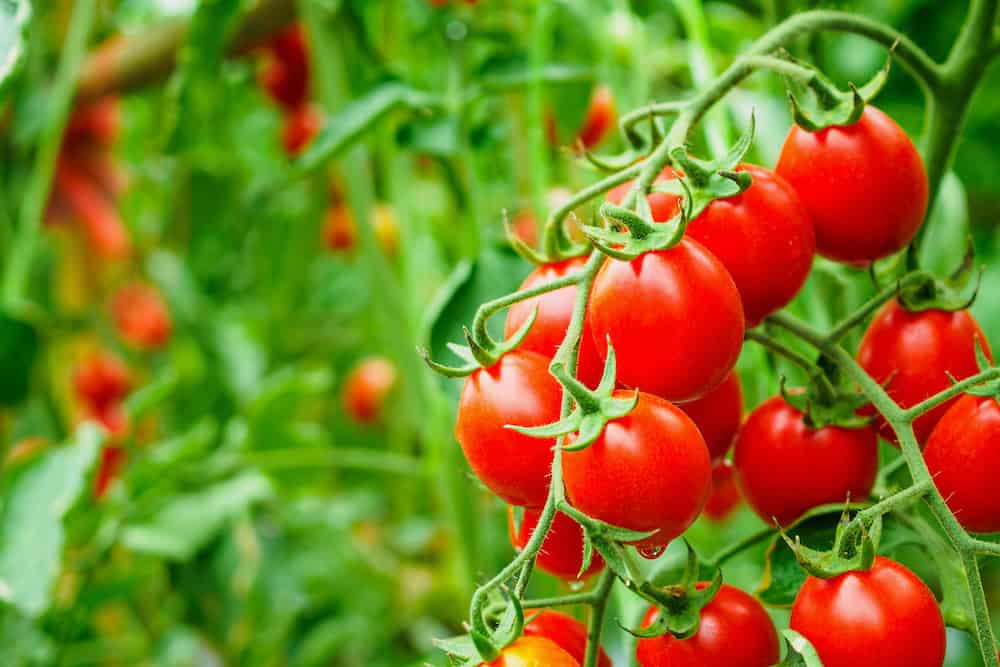



Article by: Hari Yellina
In the height of summer, nothing beats the taste, texture, and rich juiciness of a freshly picked tomato. We’re all aware of the benefits and trends of eating seasonally, but by utilising the technology used in hydroponic growing practises, we can enjoy high-quality tomatoes all year long and avoid those that have been picked green, cold stored, and manipulated to the tasteless varieties that occasionally make their way onto our plates in the winter and spring. It all comes down to managing their growing environment, which is why a blooming hydroponic tomato tastes so much better, is more pleasing to the sight, and is admittedly sometimes little more expensive than their field produced siblings. Glass and greenhouses provide the ideal atmosphere for a crop to grow – and not just grow, but thrive, flower, and evolve into a flavour pleasure that transports your taste buds to another world!
Here’s why, even if a hydroponic truss of pleasures costs a dollar or two extra per kilo, you should go for a truss of hydroponically farmed tomatoes on the higher shelves of your fruit shop or supermarket. The majority of people are familiar with the concept of hydroponics: plants are grown indoors in an inert medium and fed nutrient-rich, pH-balanced water while the grower manipulates the indoor environment to the ideal climate for optimal growth, yield, and fruit production – similar to how you heat your house in the winter. Hydroponics is a superior growing method since the nutrient-rich water is recycled via the hydroponic channels, minimising water and critical element usage — most hydroponic growers use a third less water to grow twice as much product as traditional farming methods.
Natural pest controls, such as ‘Integrated Pest Management,’ are commonly introduced to the indoor environment, obviating the need for harsh pesticides. Farmers introduce a new insect, one that is a natural predator of the bad bug, if a pest is identified in the local area or greenhouse – I like to call it the “bug eat bug” method. No insecticides are sprayed on the crops if the problem is detected early and addressed quickly. Hydroponic tomatoes were given a poor image in the early days of hydroponic production in Australia — tasteless, bland, pale, and pricey – and many consumers (and farmers) avoided them like the plague. However, as we moved closer to the twenty-first century, our understanding of hydroponics grew. In today’s world, hydroponic producers are concerned not just about environmental impact and sustainability, but also about flavour and nutritional content.
Growers have admitted that we are in the midst of a “fresh food revolution,” in which consumers are turning away from low-cost, mass-produced, low-quality fruit. Consumers who are more informed are purchasing less produce in favour of food that is higher in nutritional content, environmentally friendly, in season, and tastes as it should.
Essential nutrients are continuously delivered to the plant’s root system, allowing the plant to retain its energy and focus on growing its budding fruits. Growers may adapt to a plant’s individual growing requirements on a daily basis, giving the plant the necessary nutrients at the right time, depending on where the plant is in its life cycle. When a tomato is in the fruit-producing stage, for example, it requires varying levels of nutrients. As a result, nutrient levels are monitored on a daily basis so that producers know exactly which nutrients the plant is receiving; however, controlling nutrient levels in the ground is much more difficult. Because they’re grown in a controlled environment there is less produce wasted from environmental or atmospheric influences. Take pest damage as an example; it’s rare to find a hydroponic crop ruined by pest infestation because it’s easier to monitor and control an indoor environment, and since there is less risk of crop damage, growers tend to outlay more money on quality seed stock – producing a more superior fruit. Plus they don’t have to worry about frost because they can heat the greenhouse and the water the plants uptake. And the roof keeps away any threat of hail damage too!